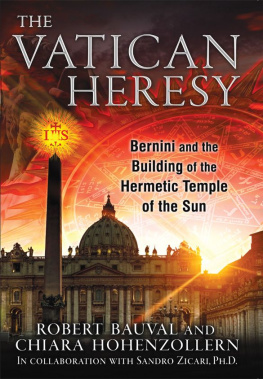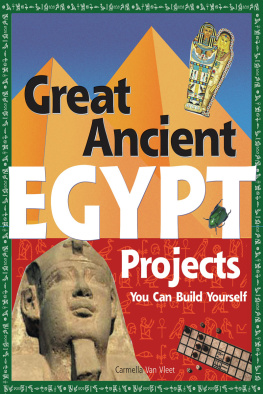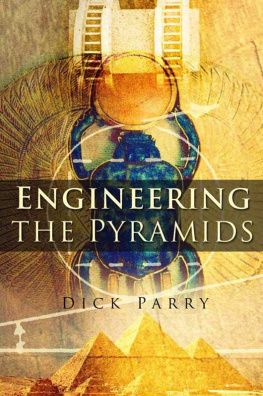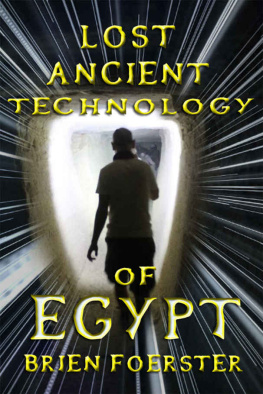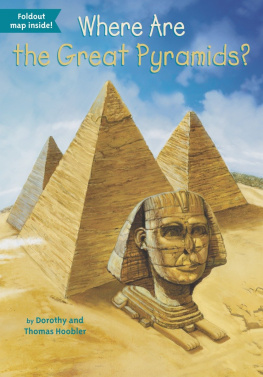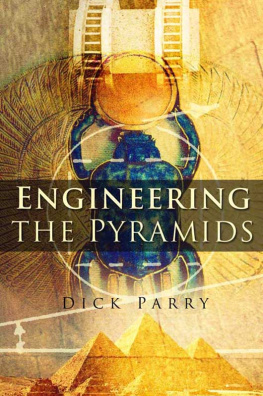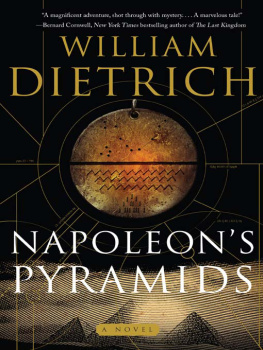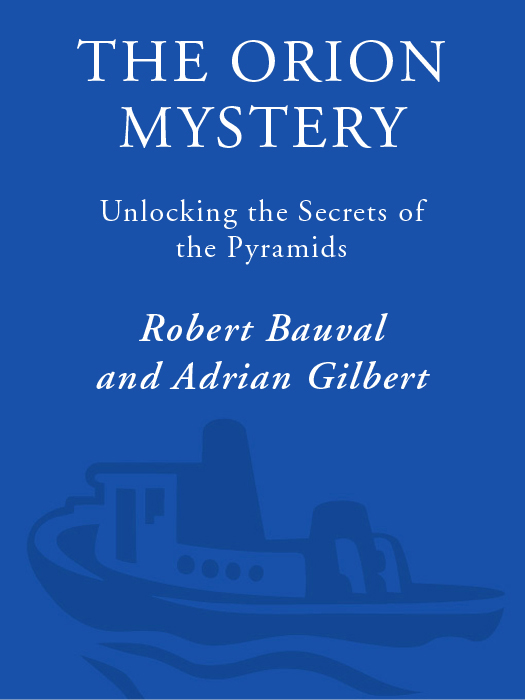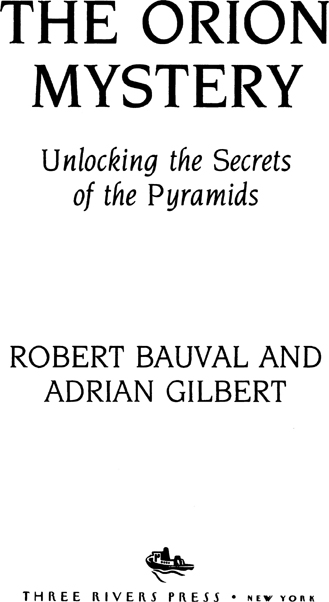Articles by Robert Bauval (appeared in Discussions in Egyptology)
A Master Plan for the Three Pyramids of Giza Based on the Configuration of the Three Stars of the Belt of Orion in DE 13, 1989, pp. 718
Investigations on the Origins of the Benben Stone: Was it an Iron Meteorite? in DE14, 1989, pp. 517
The Seeding of the Star Gods: A Fertility Ritual Inside Cheopss Pyramid? in DE 16, 1990, pp. 2129
Cheopss Pyramid: A New Dating Using the Latest Astronomical Data in DE 26, 1993, pp. 57
The Upuaut Project: New Findings in the Southern Shaft in the Queens Chamber of Cheopss Pyramid in DE 27, 1993
The Adze of Upuaut: The Opening of the Mouth Ceremony and the Northern Shafts in Cheopss Pyramid (to appear in 1994). With A. Gilbert
The Horizon of Khufu: A Stellar Name for Cheopss Pyramid (to appear in 1994)
Logistics of the Shafts in Cheops Pyramid: A Religious Function Expressed with Geometrical Astronomy and Built-in Architecture (to appear in 1994)
Also by Adrian Gilbert
The Cosmic Wisdom Beyond Astrology
For Michele and Dee
Contents
Line Illustrations
All illustrations are by Robin Cook
Acknowledgements
The Orion Mystery is the result of ten years research. It is not easy to thank properly everyone who has so kindly helped to turn this project from an idea into reality. Foremost we must thank our respective wives, Michele Bauval and Dee Gilbert, for the practical and emotional support they have given us. Without their help The Orion Mystery would have remained a mystery for much longer.
Special thanks go to Dr I.E.S. Edwards (Keeper of the Egyptian Antiquities at the British Museum 19541974); Engineer and archaeologist Rudolf Gantenbrink; Professor Jean Kerisel (General-Secretary of the Franco-Egyptian Society); Professor Hermann Brck (Astronomer Royal of Scotland 19571975); Professor Mary Brck (Lecturer in Astronomy at Edinburgh University); Dr Jaromir Malek (Director at the Griffith Institute, Ashmolean Museum); Professor Nicolas Mann (Director of the Warburg Institute, London); Dr Vivian Davies (Keeper of Egyptian Antiquities at the British Museum); Dr Alessandra Nibbi (Egyptologist and Editor of DE Publications); Jean-Paul and Pauline Bauval (Malaga); Denis and Verena Seisun (San Diego); Marion Krause-Jach (Berlin); Lyndsay Kent (Birmingham); John and Josette Orphanidis (Cairo); Geoffrey and Therese Gauci (Sydney); Dr Henri Riad (Cairo); Robin Cook (Glastonbury); Viviane Vayssieres (London); David and Christiane Joury (Riyadh); Michael and Sue Pim (Beaconsfield); David Keys (London); Alice Harper (London); Erich Von Daniken (Solothurn); Hoda Hakim (Cairo); Osta Sabry (Cairo).
We wish to express special appreciation to Bill Hamilton and Sarah Fisher and all at A.M. Heath & Company Ltd; Sarah Hannigan and Jo Mayer and all at Heinemann Mandarin.
We would also like to thank the staffs of the various libraries that were consulted: the Mitchell Library of the University of Sydney; the Ashmolean Library, Oxford; the Warburg Institute Library, London; the Beaconsfield County Library; The British Library.
Last, but not least, a very special thank you to the Robot UPUAUT 2 who opened the ways for all of us.
Permissions for quotes/photographs:
We would like to thank the following individuals and organisations: Penguin Books Ltd for special permission to quote from J.B. Sellerss book, The Death Of Gods In Ancient Egypt; Chatto & Windus Ltd for permission to quote from E.C. Krupps In Search Of Ancient Astronomies; Thames and Hudson for permission to quote from R.T. Rundle Clarks Myth and Symbols In Ancient Egypt; The Egypt Exploration Society for permission to reproduce Sir A. Gardiners article in JEA 11, 1925; Dr Virginia Trimble for permission to reproduce her article in MIFOAWB Band 10, 1964; The Oxford University Press for permission to quote from R.O. Faulkners The Ancient Egyptian Pyramid Texts; Dr I.E.S. Edwards for special permission to quote from all his published material and relevant letters to the thesis; Dr J. Malek for special permission to quote from a personal letter; Rudolf Gantenbrink for permission to use his data; The British Museum Press for permission to quote from R.O. Faulkners The Book Of The Dead.
Robert G. Bauval and Adrian G. Gilbert 1993

PROLOGUE: The Last Wonder of the Ancient World
His majesty King Cheops spent all his time trying to find out the number of secret chambers of the sanctuary of Thoth so as to have the same for his own horizon (pyramid)
Westcar Papyrus, Berlin Museum
As for the pyramid of Cheops, do we know everything about it, do we really know it at all? The archaeologists thought they had conclusively explored it eighty years ago, then, lo and behold, in 1945, by pure chance, the gigantic funerary boats were found intact
Georges Goyon, Le Secret des Batisseurs des Grandes Pyramides
In the centuries before Christ, when Alexandria was preeminent among the cities of the Greek world and its citizens were great travellers, there were seven wonders whose reputation surpassed all others and which everyone wanted to see. Six of these the gardens of Semiramis at Babylon, the statue of Zeus at Olympia, the temple of Artemis at Ephesus, the Mausoleum at Helicarnassus, the Colossus of Rhodes and the Pharos lighthouse at Alexandria itself have disappeared. Only one remains for us to visit: the pyramids of Egypt.
These extraordinary monuments, which make Stonehenge look like a mornings work,
Contemporary Egyptology has no convincing answers. Pick up any textbook on the subject and you will encounter the same statement, that the pyramids functioned as royal tombs. But why, when a simple hole in the ground would have sufficed, should the Egyptians have built tombs up to 147 metres high? Why make this prodigious effort to house a dead body? Even given that the pharaohs were autocrats and were revered as living gods, this seems like a colossal waste of time and energy.
The popular image of gangs of slaves forced to carry out this enormous task is also a myth; there is no evidence to suggest that people were compelled to take part in this massive enterprise against their wills indeed, if anything, the opposite. The sheer quality of craftsmanship in the construction of the pyramids suggests a pride in the work, and there are subtleties of design which suggest ideals at odds with the brutal image of Ancient Egypt portrayed in biblical film epics.
In fact, the Egyptians were highly civilised and deeply religious at a time when Europeans were still primitive, and there is much to suggest that they built pyramids more as an affirmation of their religious convictions than to glorify dead pharaohs, however powerful. But the Egyptians were also an extremely reserved people, who kept the inner mysteries of their religion from all but a few chosen initiates. As it was these few who directed the building of the pyramids, it is not surprising that we know so little about their motives.


